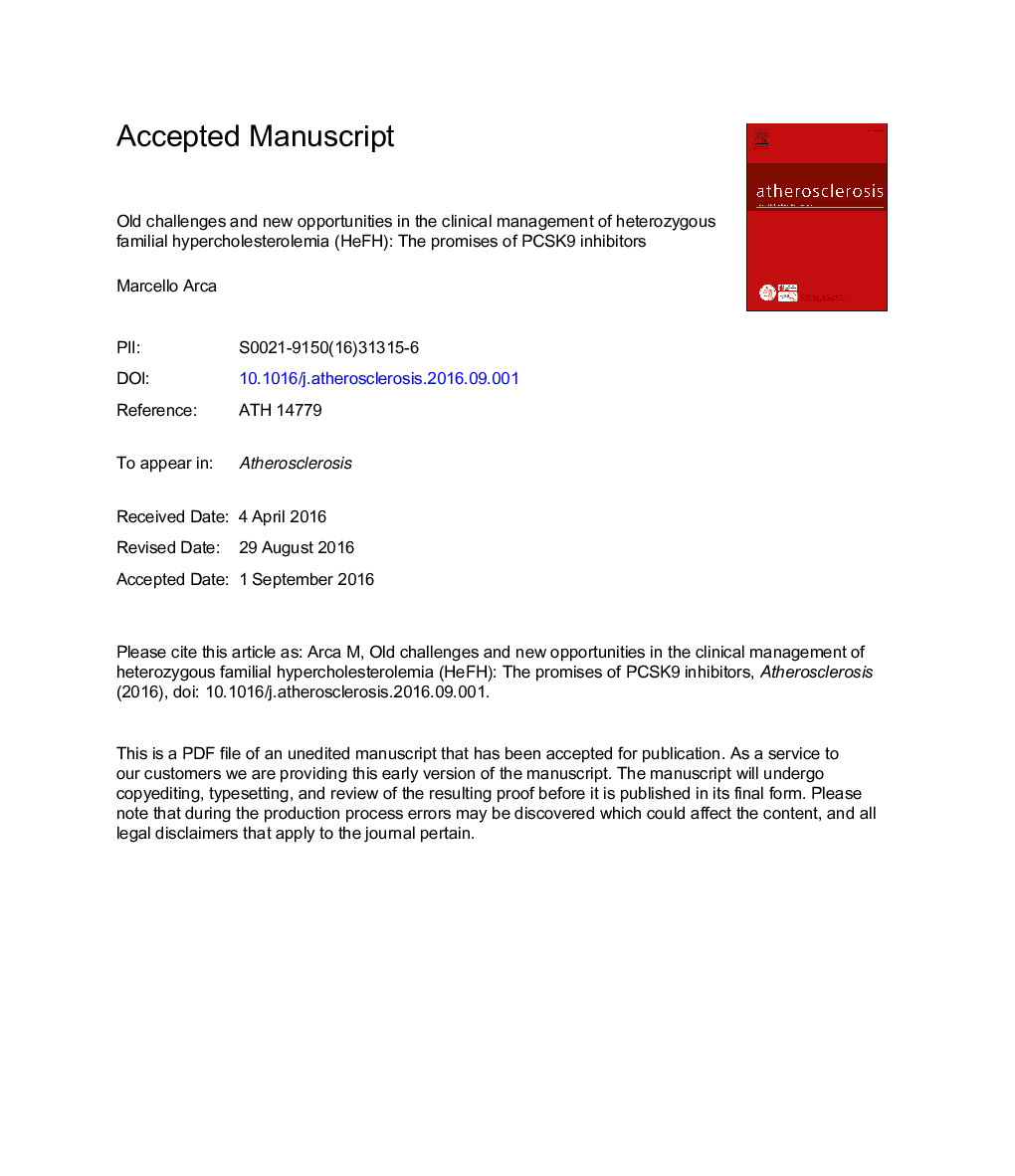| Article ID | Journal | Published Year | Pages | File Type |
|---|---|---|---|---|
| 5599687 | Atherosclerosis | 2017 | 53 Pages |
Abstract
Heterozygous familial hypercholesterolemia (HeFH) is a common (early estimates suggested a prevalence of 1 in 500 individuals, but recent studies have indicated that it may be higher) genetic disorder characterized by markedly elevated plasma concentrations of low-density lipoprotein cholesterol (LDL-C). HeFH is associated with an elevated risk of premature coronary heart disease, stroke, and peripheral vascular disease. Despite the availability of reliable diagnostic criteria (high LDL-C levels, family history or premature CHD and hypercholesterolemia, cerebral/peripheral vascular disease, and the presence of tendon xanthomata or presence of arcus cornealis before age of 45), HeFH is underdiagnosed and undertreated worldwide. Moreover, while there are effective treatments available to decrease LDL-C and prevent early-onset heart disease in individuals with HeFH, because of the high baseline levels of LDL-C, the achievement of target LDL-C levels remains a challenge. In recent years, a number of novel therapies to lower LDL-C levels in HeFH have been developed, including the monoclonal antibodies against serine protease proprotein convertase subtilisin/kexin type 9 (PCSK9), alirocumab and evolocumab, which have the potential to reduce LDL-C by an additional 50%-60% when prescribed in combination with standard lipid-lowering drugs. This review summarizes the challenges in clinical management of subjects with HeFH, with a focus on emerging treatments, and highlights the status of HeFH diagnosis and treatment in Italy.
Keywords
Related Topics
Health Sciences
Medicine and Dentistry
Cardiology and Cardiovascular Medicine
Authors
Marcello Arca,
